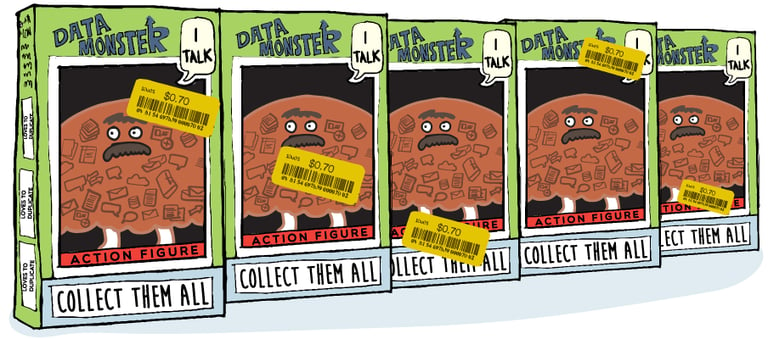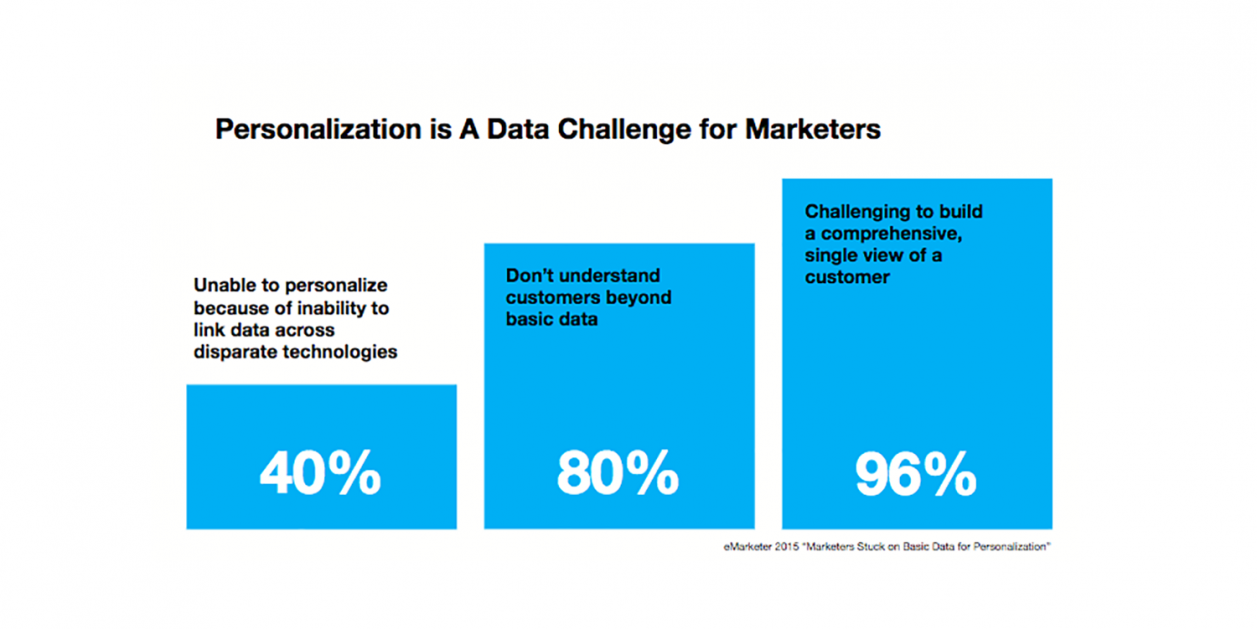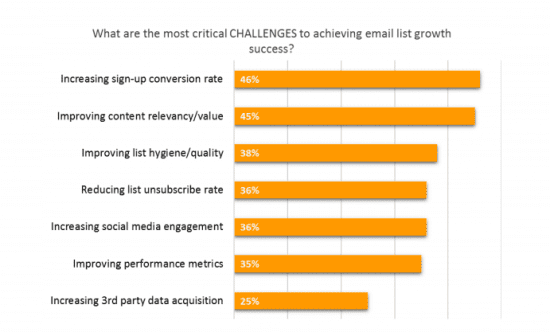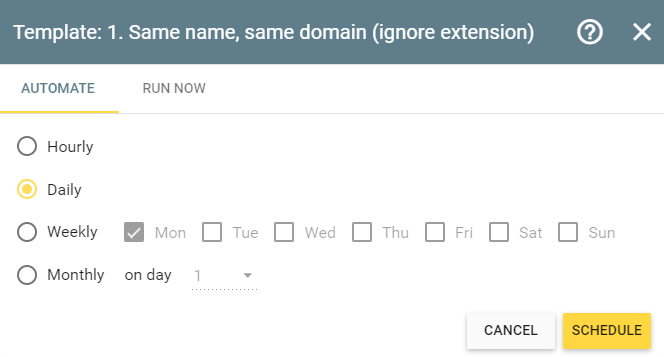Subscribe now and get the latest podcast releases delivered straight to your inbox.
9 Real-World Reasons Duplicate Data Is Killing Your Marketing & Sales Returns

By Ryan Bozeman
Aug 30, 2019

We’ve all been there. You send out an email marketing campaign to your list, start scrolling through the reports and feel your stomach drop.
You’ve discovered an embarrassing mistake.
Maybe you delivered the same email to the same person multiple times. Or you used records that had been duplicated and have since become outdated.
No matter what the exact issue was, any mistakes in your automated marketing messages reflect poorly on your business, can confuse customers, and will drain productivity from your marketing and sales teams. Ultimately, data issues can cause irreparable harm to your marketing and sales budgets.
The most common data quality issue is duplicate data. Duplicates can come from a wide range of sources — customer input error, importing and exporting errors, or even mistakes from your team.
Let’s dive into exactly why duplicate data can be such a problem for companies of any size and the different ways that it can harm your marketing and sales campaigns.
What is duplicate data?

Source: Salesgenie
Duplicate data can be any record that inadvertently shares data with another record in your marketing database. The most visible form of duplicate data is a complete carbon copy of another record. These are the easiest to spot and usually occur while moving data between systems.
But exact carbon copies of entire records are not the only type of duplicate data. In fact, they are perhaps the least harmful of all duplicates (although their existence can lead to more serious problems down the road).
The most common (and harmful) type of duplicate data is a partial duplicate. These are records that may contain the same name, phone number, email, or address as another record, but also contain other non-matching data.
Sometimes partial duplicates are created by human error — when a customer or member of your team enters information by hand. Someone may inadvertently create a new record for a prospect, customer, or company that is already contained in your HubSpot or other marketing databases.
Many partial duplicates start out as carbon copy duplicates. Let’s say you have a customer record in your database that is copied in full during the importing process. You now have two records for that customer.
As you collect more data about that customer, only one of the two records gets updated. You may inadvertently add new data to each record, causing the two records to diverge farther from one another over time.
Understanding duplicate data is a solid first step. But to truly understand its impact, you have to have an understanding of the real-world problems that duplicate data creates.
1. Wasted marketing budget
Duplicate data wastes your marketing budget. In some cases, the duplicate rate in a database can reach as high as 20%-30%. Poor marketing data costs U.S. businesses $611 billion per year.
When you have frequent duplicates in your HubSpot database, you may inadvertently send multiple marketing messages to the same person. Your campaigns may pull important campaign data for personalization from the wrong customer record, killing your conversion rates and burning through your ad spend.
Additionally, your marketing teams will have to spend time dealing with duplicate data when they should be focusing on more important, big-picture strategies.
It can take hours to sift through long Microsoft Excel spreadsheets and use complicated formulas to identify and merge or remove duplicate records. Even then, you are likely to accidentally delete important data. Editing data by hand is a time-consuming task, often taking days or weeks in large databases.
2. No single customer view

Source: Bizibl
A single customer view is critical, and its benefits reverberate throughout your organization as a whole. In modern marketing systems, marketing, sales, and customer support teams all end up sharing the same data.
Most companies have the goal of tracking every interaction that they have with a customer throughout their engagement with the company.
That means the customer records that your marketing teams used to walk your prospects through the buying cycle are the same records that your customer success team uses.
Data errors and duplicate records remain an issue throughout the customer lifecycle.
A lack of a single customer view is perhaps the most detrimental aspect of duplicate data.
The different records may receive updates separately, resulting in an incomplete picture of the journey that each customer took, which reduces how effectively you can speak to them.
78% of consumers will only engage with offers if they have been personalized, taking into account their previous interactions with a company.
3. Duplicate data hinders personalization
Customers expect personalization. If you aren’t doing it well, you can bet that you are losing business to your competitors that are. It’s a staple of any effective modern marketing campaign. 67% of companies rely on CRM data to help them target and segment customers. 77% of consumers report that they have paid more for a product that offers a personalized experience.
Without confidence in the accuracy of your data, it’s difficult to inject personalization into all aspects of your business. You have to have clean, accurate data, or customers will see through your automation and personalization efforts.
Delivering content with inaccurate personalization is much worse than having no personalization at all.
Duplicate records tend to be a snapshot of a moment in time. If you have two records for the same customer, one might be from when they first discovered your company and one from when they were making their buying decision.
You want to deliver completely different messages to customers who are at different stages in the buying cycle. Part of personalization is understanding what your customers want to hear and when they want to hear it. When you have duplicate data throughout your HubSpot, Salesforce, or Marketo databases, it can truly throw a wrench in that effort.
A great message delivered at the wrong time will miss the mark or go unheard.

Source: Acquia
4. Mistakes harm brand perception
Mistakes that come from duplicate data can harm the way that prospects and customers see your business.
Sending the same person the same campaign two or three times is annoying at best and perception-altering at worst. When you send communications to a prospect with inaccurate data, your automation efforts become extremely transparent in the eyes of the customer. Everyone loves personalization, but only when it is invisible. To be invisible, it has to be right.
Duplicate data doesn’t just harm prospects when they interact with your company leading up to their purchase. It can affect the messaging they receive throughout their time as a customer. Over time, those small mistakes add up. It may lead to your customers feeling like they are being overlooked, and no customer wants to feel that way.
5. Confusion among customers
Poor or inaccurate personalization doesn’t just lower your conversion rates or hurt your customer’s perception of your brand — it actively confuses them.
When you send marketing messaging that includes outdated or inaccurate data, you’ll make more work for your customer support team who has to answer questions from those confused customers. Your customers may feel like they have missed a critical step or need to provide more information.
6. Duplicate data kills email deliverability
There are few things more important to the success of a company’s marketing operations than the standing of its email reputation. It’s something that everyone should work to protect. If your email deliverability rates plummet, you’ll harm your reputation — and harm any initiatives on what is, for many, their most effective digital marketing channel.
Duplicate data can harm your email reputation in a number of different ways. When you deliver duplicate messages to the same person multiple times, you are more likely to have your messages flagged as spam.
Additionally, recipients themselves are more likely to flag your incoming emails as spam when they receive duplicates.
Receiving multiple emails (or emails with data from inaccurate, outdated records) will also increase unsubscribe rates. Customers have very short patience for those kinds of mistakes.
In fact, improving email list hygiene is one of the primary concerns and biggest challenges among email marketers:

Source: V12 Data
7. Inaccurate information on sales calls
Having accurate data and a single customer view is critical for your sales teams. They need to be able to reliably access information about a prospect’s former interactions with your brand. You don’t want them to go into their sales calls feeling like they are unprepared.
If duplicate CRM data is frequently a problem for your sales reps, you’ll find that they start double-checking your databases before they speak with prospects. Not only does this waste their time, but it can really wear on your sales reps over time.
This is particularly true for sales reps who receive commissions. The fewer sales calls that they can make, the less money they will earn. Over time, providing your sales reps with low-quality data will create animosity and may drive them to look for work at another company.
8. Lost productivity fixing records
When your marketing and sales teams have been burned by the fallout from duplicate data, they will take it upon themselves to try to fix the issue.
While this might seem like a good thing, it actually is a huge waste of time to try to fix issues by hand. Using complicated Excel formulas to identify, merge, or delete duplicate records is not only difficult, but time-consuming as well — and often only identifies a portion of the duplicate records in a dataset.
In a database with tens of thousands of different records, it can take your reps weeks to go through everything by hand. Even then, you can be certain that they will miss duplicate records in the process, or delete good data by mistake.
9. Inaccurate reporting harms data-backed decisions
Every company wants to “become more data-driven” and inject more data into its decision-making processes. Of course, the value of doing so is plain as day...if you have faith in your data. If your marketing database is full of duplicate data and other errors, how can you ever be truly sure that your reports and decisions aren’t tainted by inaccurate data?
When a certain percentage of all of your records are being counted twice or even three times, that can have a compounding effect on what your data is telling you. You have to remedy those issues before you can have true faith in the data-backed decisions that your company makes.
Avoiding duplicate data problems
Duplicate data can have a negative impact on all areas of your business. Using a solution like Insycle, you can automatically detect, merge, or delete duplicate records. With Insycle’s “Merge in Bulk” feature, you can reliably merge hundreds of duplicate records with a single click.
For example, if you wanted to find records in your database that shared a first and last name (and therefore are likely to be duplicates), it’s as simple as selecting the right fields (or loading a pre-defined template) and running a filtered search.

You’ll be provided with a list of duplicate entries with matching first and last names that you can merge in bulk into a master record. Alternatively, you can inspect the records by hand to ensure that no unique records have been accidentally identified as duplicates.
Then, you can schedule automatic duplicate record clean up processes to run on a daily, weekly, or monthly basis. You’ll never have to suffer the negative effects of duplicate data again!

Insycle connects directly to your HubSpot, Salesforce, or Intercom account, allowing you to identify and remove duplicates in real-time. You can test Insycle out with a free 7-day trial today.


Order Your Copy of Marcus Sheridan's New Book — Endless Customers!